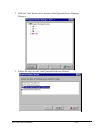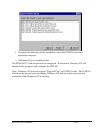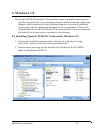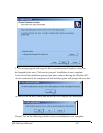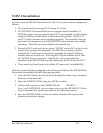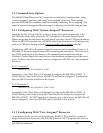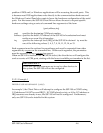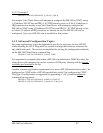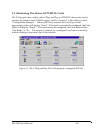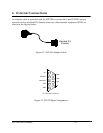
5.1.2.2 Example 2
DEVICE=C:\SSP-100\SSP100.SYS (7,120,15) (3,300,4)
In example 2, the Client Driver will attempt to configure the SSP-100 as COM3 using
I/O address 300-307 hex and IRQ 4. If COM3 already exists, or if the I/O address or
IRQ resources are already in use, the Client Driver will attempt to configure the
SSP-100 as COM7 using I/O address 120-127 hex and IRQ 15. If COM7 already exists
or if the I/O address or IRQ resources are already in use, the SSP-100 will not be
configured. Up to two SSP-100s can be installed in this system.
5.1.3 Advanced Configuration Topics
For some applications, it may be desirable to specify the resources for one SSP-100
while allowing the OS/2 Plug-and-Play system to assign the hardware resources for
any additional cards. This can be accomplished by mixing the configuration methods
on the SSP-100 Client Driver command line
DEVICE=C:\SSP-100\SSP100.SYS (3,100,5) COM7
It is important to remember that when a SSP-100 is inserted into a PCMCIA socket, the
client driver will configure the card as a series of COM ports, starting with the lowest
available port number in the list.
Another common application requirement is to have a SSP-100 inserted into socket 1 be
configured as COM3 while a SSP-100 inserted into socket 2 be configured as COM7 .
This type of configuration is supported by appending a "=Sx" parameter after any
command line argument.
DEVICE=C:\SSP-100\SSP100.SYS COM3=S1 COM7=S2
DEVICE=C:\SSP-100\SSP100.SYS (3,100,4)=S1 (7,300,3)=S2
SSP-100 User's Manual 4-7




